The promoters have emerged as an essential piece in the ambitious plan to provide health care in California to all residents.
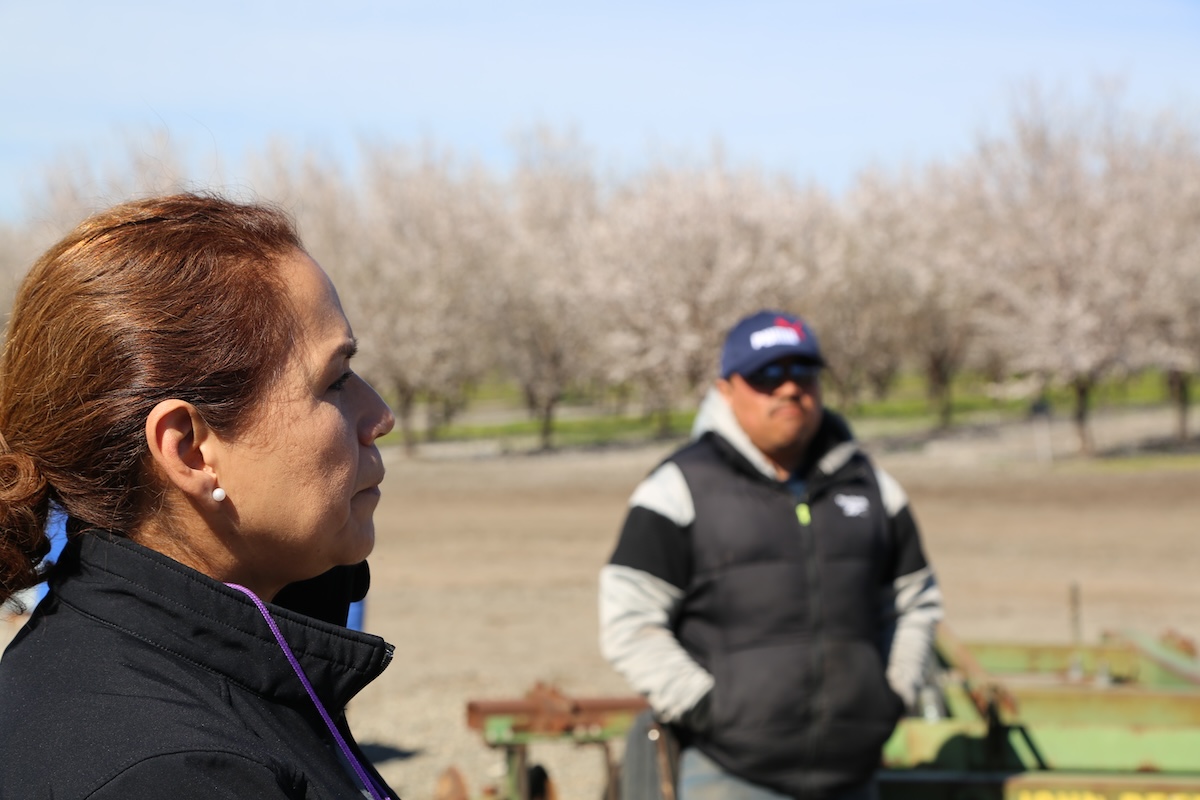
Listen to this note:
It's late February and the road leading into Hamilton City, a farming community about 10 miles west of Chico, is lined with almond trees in bloom, their pink blossoms covering fields for miles around. In the center of town is a single clinic.
Inside we meet María Soto, whose work as promotion girl is an essential piece in California's ambitious plan to offer assistance in accessing health services to all residents, regardless of their immigration status.
“I identify a lot with the community,” says Soto, 57. “I have worked in the fields, harvesting and sorting nuts here. So I love it. It gives me great satisfaction when someone says to me, ‘Thank you for helping me.’ That is invaluable to me.”
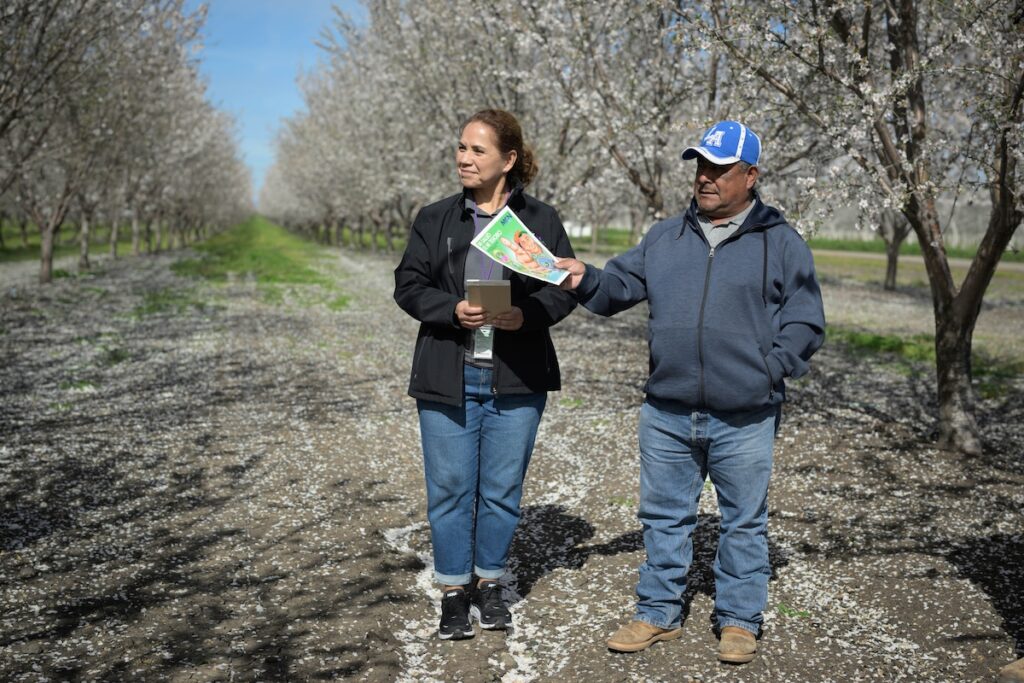
Soto is one of the three promoters of the nonprofit Ampla Health, which operates more than a dozen clinics in six counties — Glenn, Butte, Colusa, Sutter, Tehama and Yuba — in largely rural Northern California. As a federally qualified health center, Ampla is charged with expanding access to Medi-Cal (California’s version of Medicaid) throughout its jurisdiction.
This work took on greater importance starting January 1, when undocumented immigrants between the ages of 26 and 49 were able to benefit from the program.
Previous expansions targeted both seniors and children. This latest phase makes California one of the first states in the country to offer access to federally subsidized health care to all eligible residents.
With 16 million enrollees, or one in three Californians, Medi-Cal is the largest Medicaid provider in the country. With the current expansion, the state expects to add 500,000 to 700,000 more enrollees to its rolls, at a cost of about $2.6 billion a year. Medi-Cal's total annual operating budget exceeds $37 billion.
Eligibility is based on income, with the upper limit for an individual set at $21,680 per year, with approximately another $7,100 for each additional household member. Medi-Cal covers medical, dental, and vision services. Through CalAIM, the state has also expanded the range of services offered.
The challenge now is to ensure that the communities that will benefit are informed about the opportunities available, which in far northern California is easier said than done.
Accessing healthcare “without fear”
We're in an open field of almond trees, on a farm about 30 minutes from Hamilton. Surrounding us is a group of a dozen farmworkers, all originally from the same community in the state of Puebla, Mexico.
“He came once and interrupted our work,” jokes Elfego Palestino Vidal, pointing at Soto. “I never signed up,” he says, adding that in recent years he has seen more of his colleagues fall ill due to the increasingly extreme weather. “Sometimes it’s really cold, it rains a lot and then it’s really hot.” Having access to Medi-Cal “will help a lot,” he says.
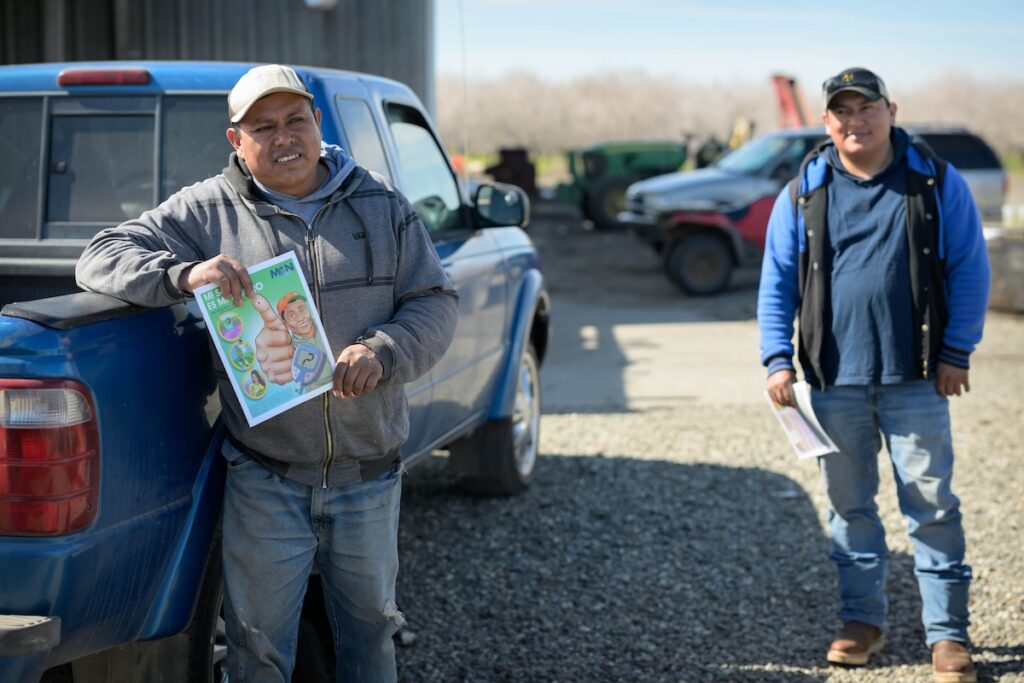
Known for its sprawling forests, towering peaks and rugged coastline, the North State — which stretches from the Oregon state line in the north to just above Sacramento in the south — is also beset by some of the state’s most glaring health disparities, from higher rates of poverty and premature death from drug addiction to mental and behavioral health challenges.
Much of the region is also designated as a Health Provider Shortage Area (HPSA), meaning there are fewer health resources per capita. For marginalized communities, including many of the farmworkers interviewed for this article, that creates additional barriers to accessing health care.
Another farmworker, Leonardo Hernandez Mesa, a husband and father of two, describes how he put off going to the doctor in the past when he fell ill, pointing to his throat and ear as he recalled a recent bout of infections. “Emergency visits are too expensive,” he says, adding that his brother – also a farmworker – has Type 1 diabetes.
“This is a great opportunity to get health insurance without fear,” Leonardo says, adding that it will allow people to detect health problems earlier rather than later. He says he has often heard others talk about postponing visits to the hospital.
A study from the University of California, UC Merced, last year found that nearly half of California farmworkers lacked health insurance at some point in the previous 12 months. The study also found that only 431 percent of farmworkers had visited a doctor's office, while only 351 percent had visited a dentist. Other studies have found wide disparities in access to mental health and other behavioral services for farmworkers in particular.
Simon Vazquez, who has worked on the same farm in Hamilton for more than two decades and is the crew chief here, has not seen a doctor since 2018. Simon “bombards” Soto with questions about where and how to contact her, whether she needs to renew every year (which is required), and what she needs to bring to a medical or dental visit (only her Medi-Cal ID is required).
“We are here to help you with any questions you may have. You already have my contact information, my phone number,” he mentions patiently.
Reaching the 'hard to reach'
“A big part of my day is driving around looking for farmworkers,” explains Soto, who came to the United States as an undocumented immigrant in 1991 and spent time working in the almond fields surrounding Hamilton City. In 2007, she began working with Ampla Health, then known as Clínicas Del Norte, after a chance encounter with the organization’s promoter coordinator at a local Mexican restaurant. “She asked me what I knew about being a farmworker.” promotion girl“I told him I didn’t know anything.”
Soto eventually applied, received training, and has been committed to the work of promotion girl“I’ve fallen more in love with the job as the years have gone by,” he says.
The model of the promoters It was first developed in Ciudad Juárez, a city in northern Mexico, in the early 1970s as a way for the municipal government to provide healthcare and related information to marginalized communities. The model soon spread throughout Latin America and later to the United States.
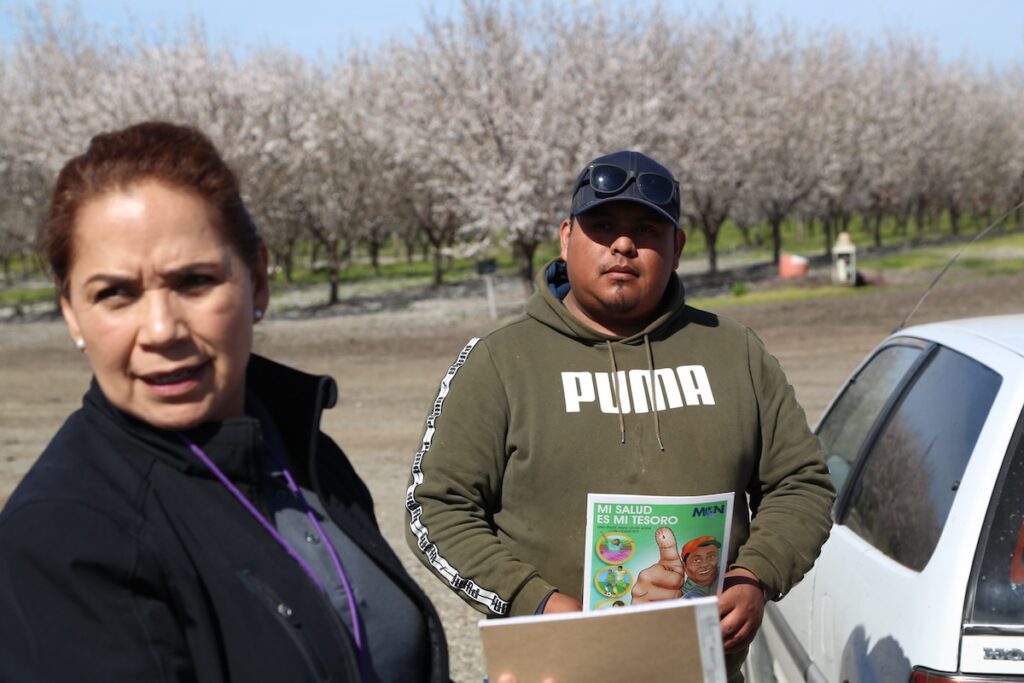
It is not clear how many promoters currently working in California. Some, like Soto, are employed directly by health care providers or community organizations. Others work more informally. The Vision and Commitment group, which launched the first network of promoters Established in 2001, the organization has about 4,000 members in 13 regions of California, nearly all of them in the southern and central parts of the state, where the population is highest and the demand for services is generally highest.
According to data from the UC Davis Center for Reducing Health Disparities, there are an estimated 10,000 farmworkers in the six counties served by Ampla. If their family members are included, that number increases to nearly 30,000 people. While it is unclear how many of these people are undocumented, the data show that nearly three-quarters of the more than half-million farmworkers in California lack documentation.
Dr. Sergio Aguilar-Gaxiola, who heads the Center for Reducing Health Disparities, says these communities are “hard to reach” and says local and state agencies need to be proactive in terms of getting the word out. “I’m not sure if they will take advantage of this Medi-Cal expansion,” he said during a recent Ethnic Media Services briefing. “It depends on how you reach out.”
[embedyt] https://www.youtube.com/watch?v=l675h8Zp8ms[/embedyt]
A 'tremendous need'
Aguilar-Gaxiola, who has spent decades researching health disparities affecting California’s farmworker population, points to a variety of barriers — from language and culture to fear of deportation — that prevent many from coming forward to access available resources.
“It’s a tremendous need,” says Aguilar-Gaxiola. “Satisfying it requires more than just good will and wanting to do the right thing. In order to reach these populations, building trust is essential.”
During the Trump administration, a law known as the Public Charge Rule, which threatened immigrants who accessed public benefits with deportation, cast a shadow over the community. Although essentials like health care and food are not considered part of a public charge determination, many immigrants remain afraid to enroll in public programs like Medi-Cal.
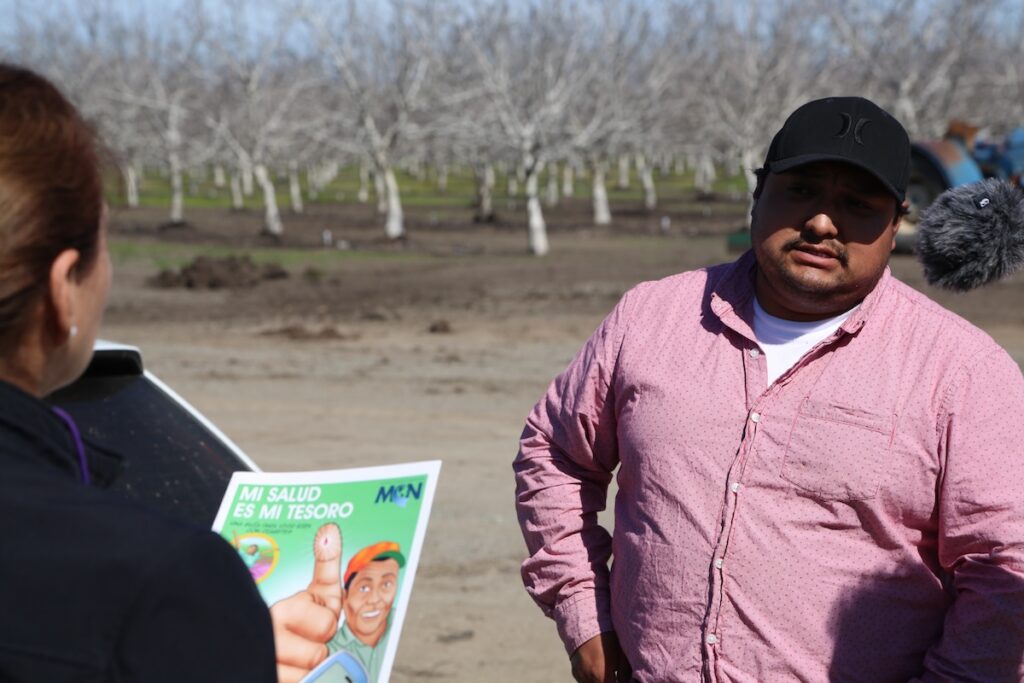
“People will be hesitant to enroll in Medi-Cal for fear of public charge,” agrees Cynthia Peshek, director of outreach at Ampla Health. “We need to make sure that’s not the situation. They need to go ahead and take advantage of these resources. There will still be those who don’t want to take the risk, so public charge may continue to be a barrier for some.”
Ampla Health organizes local health fairs and other community events, as well as working with promotoras as part of a suite of strategies aimed at connecting people to health care. But Peshek is concerned that providers in other counties where resources are more limited may not have the resources to meet this current expansion. “It’s going to be a huge undertaking,” she says.
Peshek notes that Ampla Health recently added two new clinics to its existing network to meet growing demand. “There are so many opportunities right now,” he says. “We need to get the word out in all the areas we serve.”
Back at the farm, another member of the group, Daniel, says he is currently uninsured. He is young, in his twenties. He says he has visited Ampla Health in the past and now wants to enroll to avoid the high costs of medical services and medications he may need. “It is a big help.”
As we leave, he nods at Soto. “Thank you for being here. Thank you for not forgetting us.”
This article was funded by the 2024 California Health Equity Impact Fund from USC Annenberg Center for Health Journalism. With additional reporting by Manuel Ortiz.
You may be interested in: Children's health services in California at risk due to lack of funding

